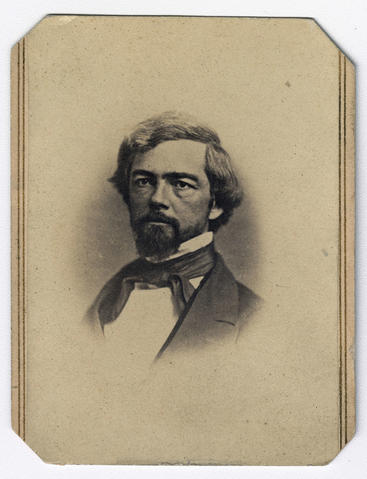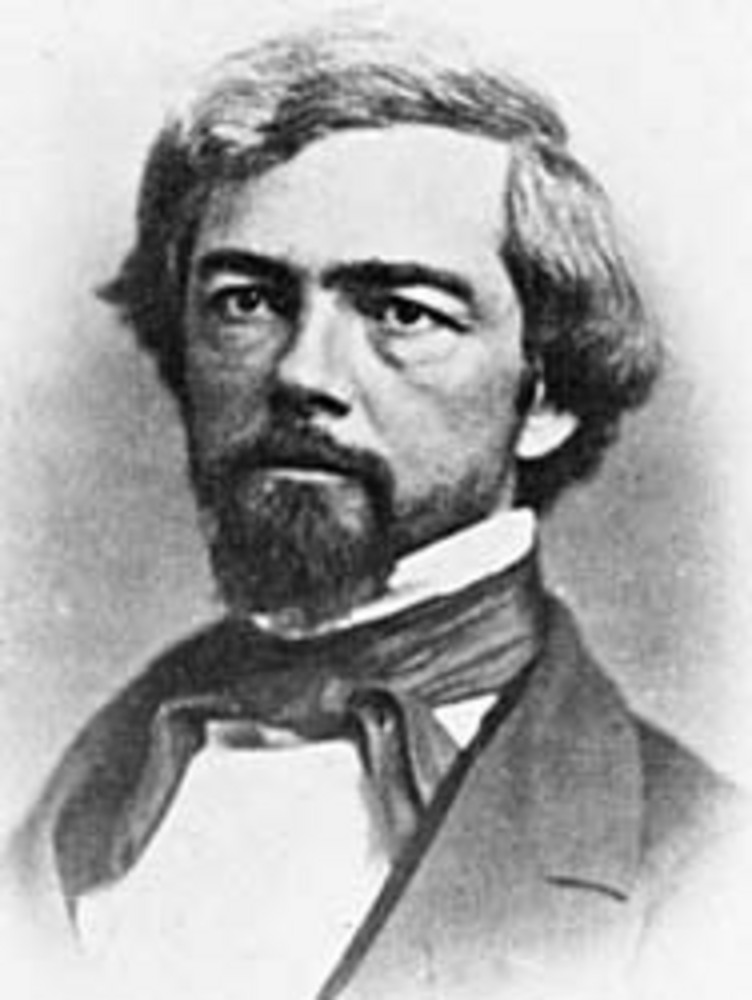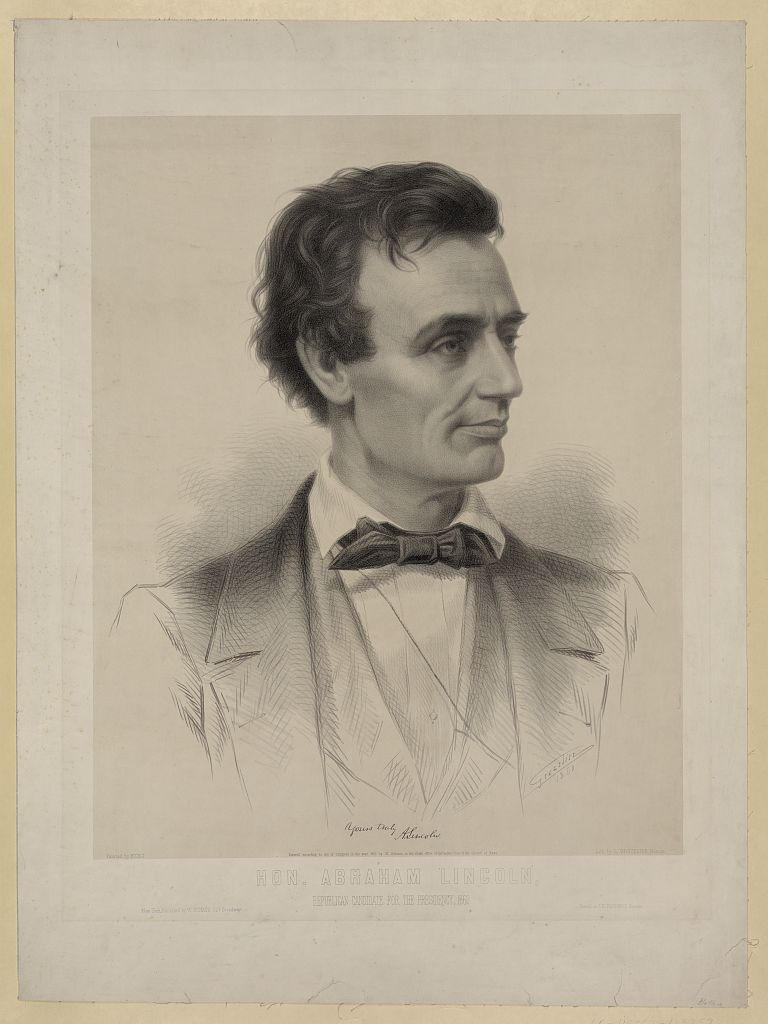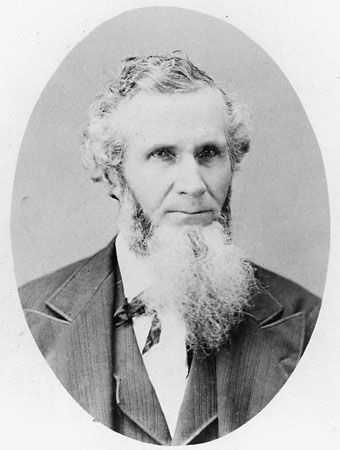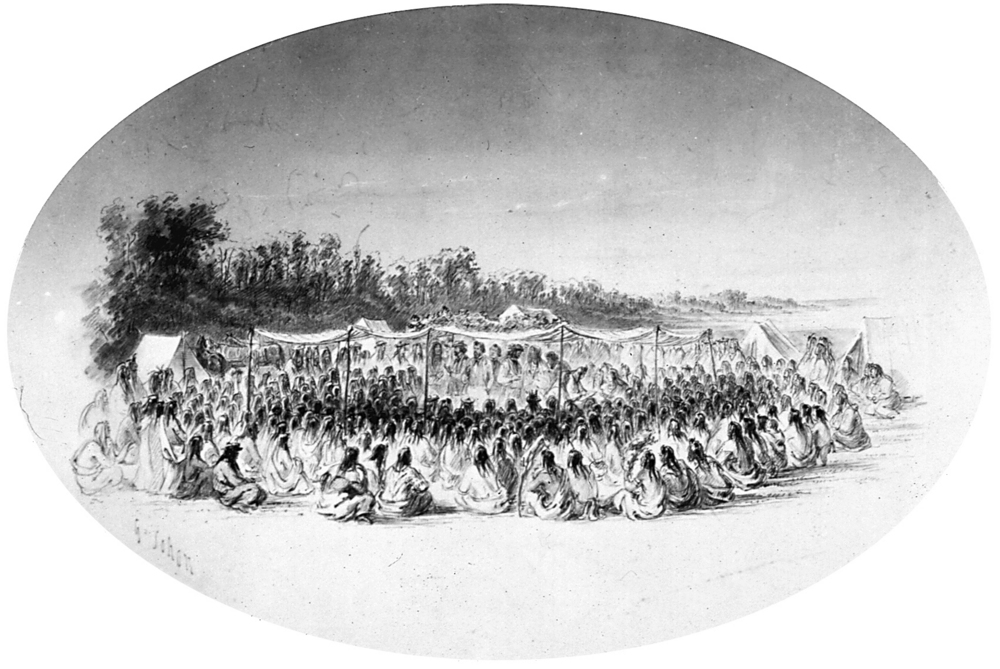Isaac Stevens strode through the Northwest's formative years (1853-1861) as a colossus among Lilliputians. The Northern Railway survey, Indian policy, settlement, infrastructure, and political development all bore his distinctive imprint. A potent mix of intelligence, persistence, and courage and an energy level that at times bordered on the frenetic propelled Stevens's vision for the Northwest. Critics have castigated him for acting imprudently or for moving too quickly. Defenders saw him as the necessary man for a fledgling territory.
Born in 1818 in North Andover, Massachusetts, to a moderately well-to-do family, Stevens was small in stature and sickly during his youth. He made up for these physical deficiencies with a combative personality that mellowed little in adulthood. Family influence won him an appointment to the United States Military Academy, from which he graduated in 1839, ranking first in his class, an achievement that earned him a coveted appointment as an officer in the Corps of Engineers.
The newly minted lieutenant supervised construction at a string of eastern coastal fortifications, followed by service as an engineer on Gen. Winfield Scott's staff during the Mexican War. He returned home suffering from a serious foot wound taken at the battle for Mexico City. A high-profile stint with the U.S. Coast Survey and vigorous support of Franklin Pierce in the 1852 presidential campaign led to his appointment in 1853 as the first governor of the vast Washington Territory, which Congress carved out of northern Oregon. Stevens wore additional hats bearing the titles of superintendent of Indian affairs and leader of the railroad survey from St. Paul, Minnesota, to the Pacific Coast.
Stevens shaped the railway survey, planned by Congress as one of several to determine the best transcontinental route, into a reconnaissance of terrain, resources, and animal life. In its thoroughness, the survey brought back memories of Lewis and Clark, although it expanded and updated the achievements of that famous pair. Stevens perceived the survey as the essential first step for the economic development of Oregon and the Pacific Northwest. Subsequent railway lines would bring settlers to lands along the route and entice tens of thousands to Oregon and Washington.
Equally important, a transcontinental line would connect the nation to Pacific Coast ports, which in turn would open the vast markets of Asia. Although the entire region would prosper, Stevens touted the harbors of Puget Sound as the nearest to Asia as well as the safest and most commodious. As a necessary corollary, the terminus of the railroad would end on the Sound, not south of the Columbia River.
The survey also initiated Stevens's implementation of the nation's Indian policy in the Northwest. He met with tribal leaders on the way west and continued informal sessions once he arrived in Olympia. An 1854 journey to the capitol allowed numerous meetings with Commissioner of Indian Affairs George Manypenny and his chief lieutenant Charles Mix. Stevens returned to the territory late in the year to carry out his superior's recently formulated "reservation" policy, which placed tribes on reserves in or near their traditional territories. There, it was contemplated, a transition would take place from a hunting-gathering society to one based primarily on agriculture.
Supported by traditional economic practices and government annuities during this transition, tribal members would at the end of a certain time become citizens little different from any other. Manypenny, as well as virtually every other political leader of the era, warned that this policy offered the only alternative to "extinction." Stevens, by himself and with Joel Palmer of Oregon at Walla Walla, concluded ten treaties with tribes in the current states of Oregon, Washington, Idaho, and Montana. In all respects they carried out government policy. Most important was a provision for individual landownership by tribal members.
Although the treaties did not of themselves cause the hostilities that followed, neither did they have the opportunity to assuage the tensions that had arisen over many years. The hostilities that enveloped Oregon and Washington from 1855 to 1858 were notable not only for the Indian-white conflict but also for the open enmity between territorial officials and officers of the regular army, particularly Gen. John E. Wool. Stevens blasted Wool for inactivity, for restraining his officers in the field, for interfering with the operations of territorial volunteers, for putting the lives of settlers at risk, and for retarding economic growth.
Elected as territorial delegate in 1857, Stevens served in that position for four years. In the nation's capital, he joined with his Oregon counterpart Joseph Lane to champion the causes of the Northwest. They delivered a one-two punch to General Wool who had continued to condemn the war as one ginned up for profit. Stevens and Lane prevailed by pushing through legislation that paid the war debt on favorable terms and secured ratification of the Stevens treaties.
The presidential election campaign of 1860 again found the Lane-Stevens duo at work. Both believed that the Constitution protected slavery—known at the time as the "peculiar institution"—a position that benefited neither of them politically in the Northwest. They contributed to the split in the Democratic Party by supporting the candidacy of John C. Breckinridge. Lane ended up as Breckinridge's running mate, and Stevens chaired the Southern Democrat's national committee, their influence significantly overreaching the political significance of Oregon and Washington. Lincoln's victory weakened Stevens's political stock at home, but all was rendered moot by the outbreak of Civil War. Stevens served well as a Union brigadier general until his death at Chantilly on September 1, 1862, while leading his troops in a charge against the forces of General Stonewall Jackson.
At a time when most territorial officials were political nonentities (as were his successors as governor over the next thirty-two years), Isaac Stevens during his eight years in Washington made a deep and lasting impact on the territory and broader region. His survey, his work to secure appropriations for roads and other infrastructure, and improvements such as the territorial library proved to be accomplishments matched by few of his peers.
The Indian treaties, although not of his design, opened the way for settlement and growth, for which he would have seen no reason to apologize. His passion, energy, and persistence in pushing toward his goals were his great strength and often energized those around him to accomplish more than they believed possible. These strengths were conversely also his greatest weakness, as he at times arbitrarily dismissed others' points of view and perceived honest differences of opinion as personal attacks. Loved or hated, he, as much as anyone, influenced the course of events in early Oregon and Washington history.
-
![]()
Major General Isaac Ingalls Stevens.
Oregon Historical Society Research Library, Digital Collections, Cartes-de-visite collection; Box 6, f. 1005-1; OrHi 1433 -
![]()
-
![]()
Isaac Ingalls Stevens (1818-1862).
Oreg. Hist. Soc. Research Library, ba001214
Related Entries
-
![Creation of Washington Territory, 1853]()
Creation of Washington Territory, 1853
On August 14, 1848, Congress created Oregon Territory, a vast stretch o…
-
![Election of 1860]()
Election of 1860
The presidential election of 1860 was a turning point in Oregon politic…
-
![Joel Palmer (1810–1881)]()
Joel Palmer (1810–1881)
Joel Palmer spent just over half of his life in Oregon. He first saw th…
-
![John E. Wool (1784-1869)]()
John E. Wool (1784-1869)
Although his time spent in Oregon was short, General John E. Wool was a…
-
![Joseph Lane (1801-1881)]()
Joseph Lane (1801-1881)
Joseph Lane was the first governor of Oregon Territory. A leading Democ…
-
![Kalapuya Treaty of 1855]()
Kalapuya Treaty of 1855
The treaty with the Confederated Bands of Kalapuya (1855) is the only r…
-
![Walla Walla Treaty Council 1855]()
Walla Walla Treaty Council 1855
The treaty council held at Waiilatpu (Place of the Rye Grass) in the Wa…
Related Historical Records
Map This on the Oregon History WayFinder
The Oregon History Wayfinder is an interactive map that identifies significant places, people, and events in Oregon history.
Further Reading
Ficken, Robert. Washington Territory. Pullman: Washington State University Press, 2002.
Richards, Kent. Isaac I. Stevens. Pullman: Washington State University Press, 1993.
Stevens, Hazard. The Life of Isaac Ingalls Stevens. 2 vols. Boston: Houghton, Mifflin, 1900.

